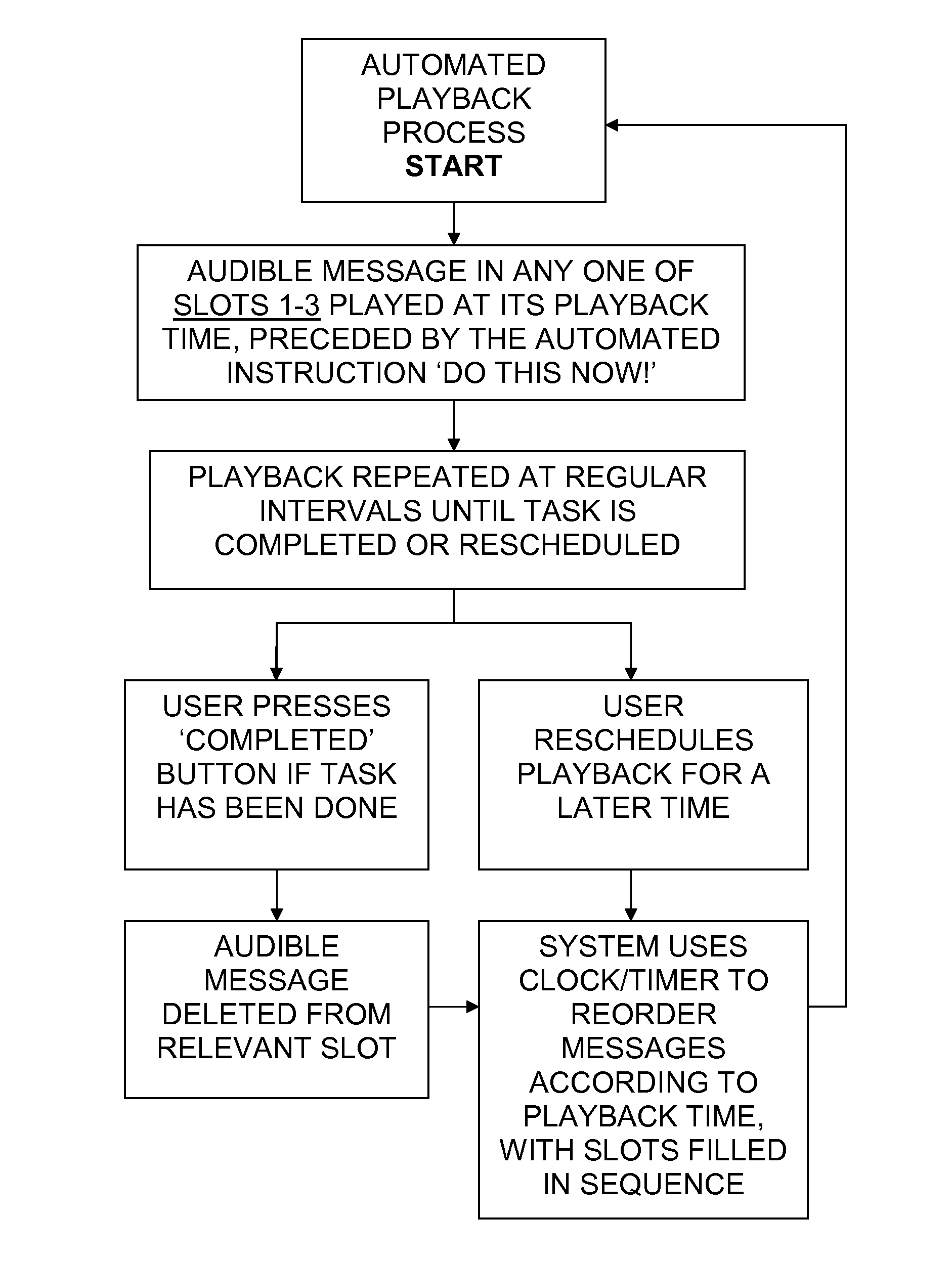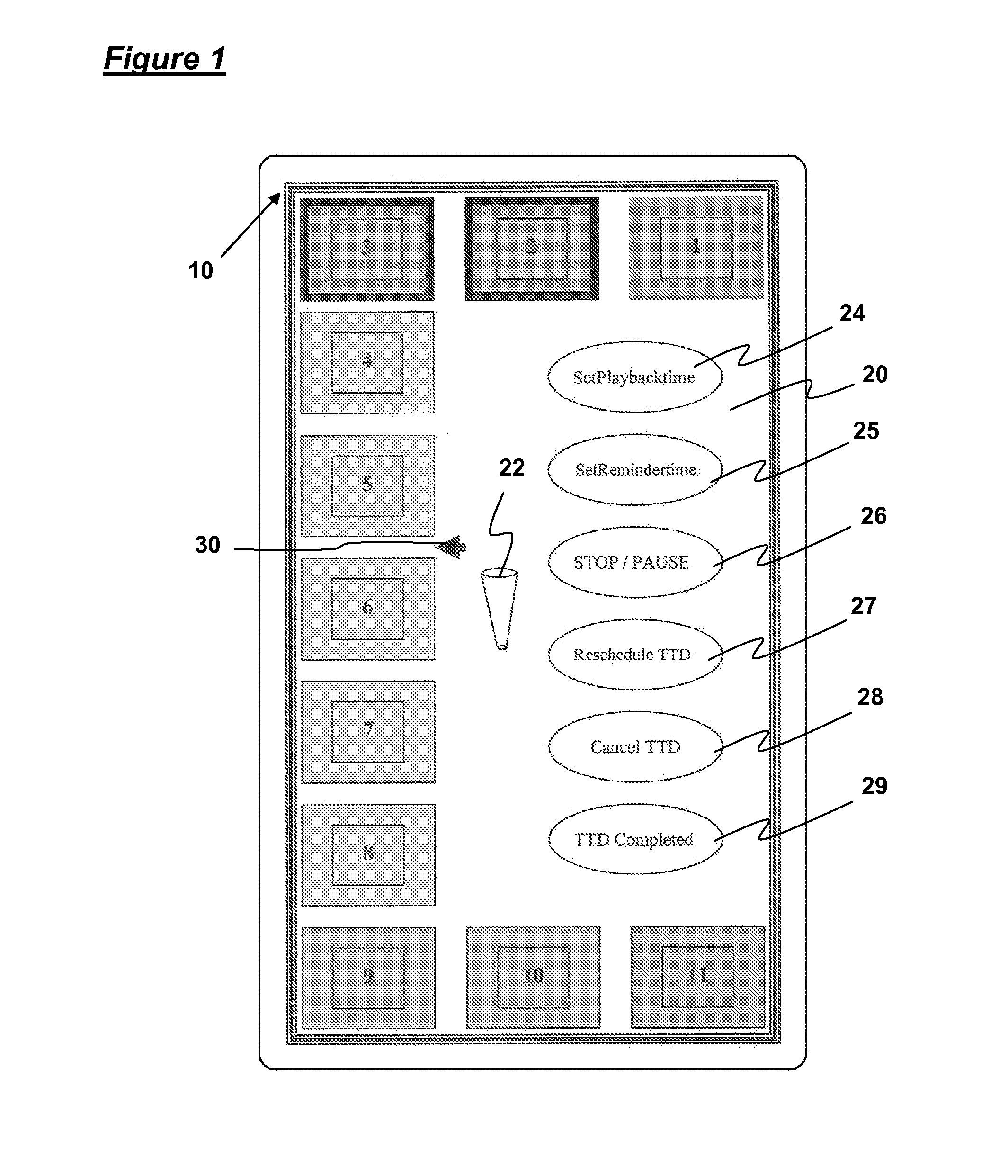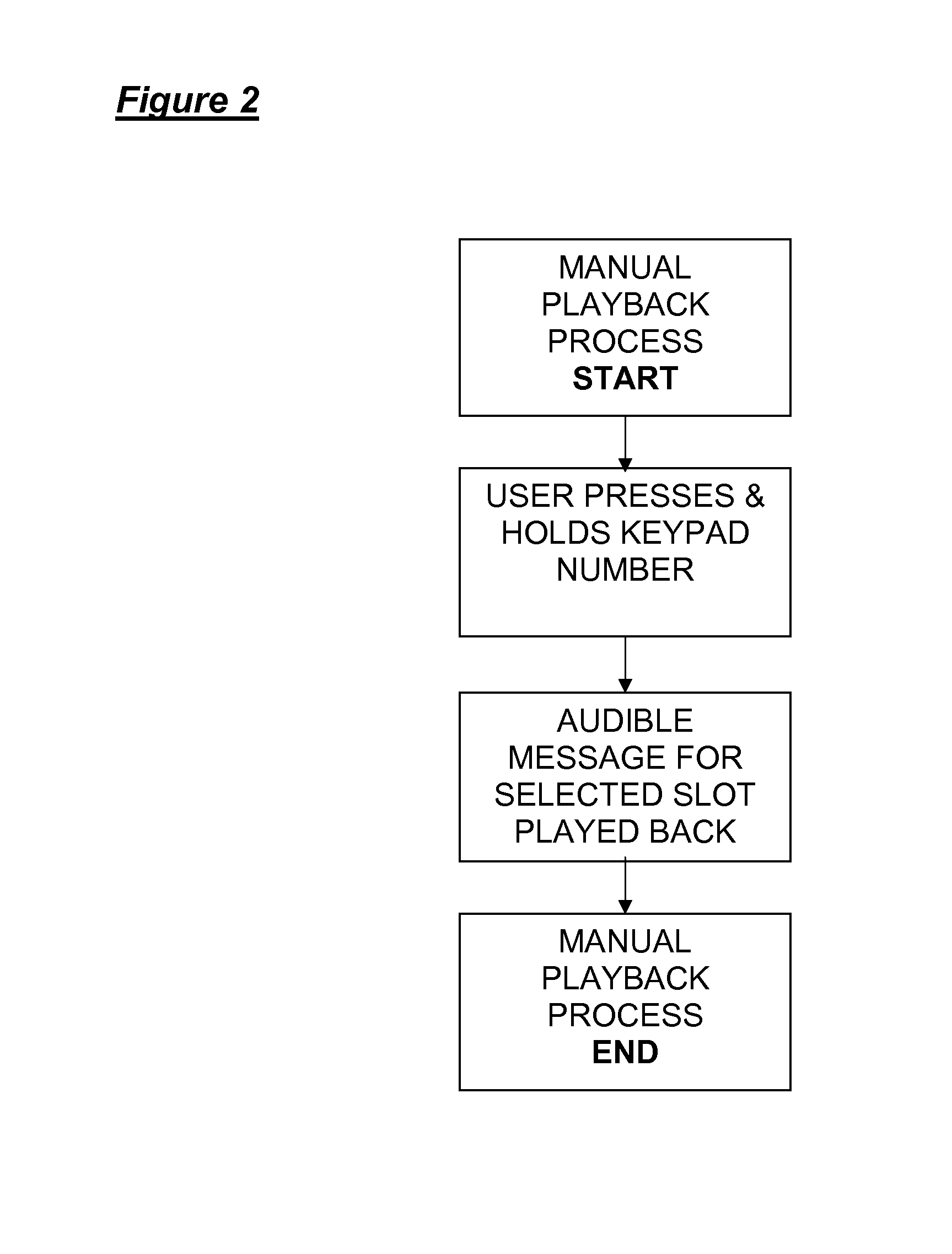Memory aid device
a technology of memory aid and memory, which is applied in the field of memory aid devices, can solve the problems of not being entirely satisfactory in the current device, not being able to cope with the less important memory,
- Summary
- Abstract
- Description
- Claims
- Application Information
AI Technical Summary
Benefits of technology
Problems solved by technology
Method used
Image
Examples
Embodiment Construction
[0041]FIG. 1 shows a first embodiment of a device according to the invention, which is generally designated 10. The first embodiment 10 has the form of a touch-screen phone, and in particular is implemented by a computer program running on a touch-screen phone, such as an iPhone®.
[0042]The device 10 comprises a touch-screen display 20, which is adapted to display a number of icons that are actuatable by the user. In particular, a user applying mild pressure to one of the displayed icons actuates the function associated with that icon. The device is also adapted to receive so-called “drag-and-drop” instructions from the user, by the user applying mild pressure to an icon, and moving that applied pressure across the surface of the screen to a desired location. The device is adapted to perform a function from these drag-and-drop instructions involving the icon originally selected, and the area of the screen from which pressure was transferred and ultimately removed. The application of ...
PUM
 Login to View More
Login to View More Abstract
Description
Claims
Application Information
 Login to View More
Login to View More - R&D
- Intellectual Property
- Life Sciences
- Materials
- Tech Scout
- Unparalleled Data Quality
- Higher Quality Content
- 60% Fewer Hallucinations
Browse by: Latest US Patents, China's latest patents, Technical Efficacy Thesaurus, Application Domain, Technology Topic, Popular Technical Reports.
© 2025 PatSnap. All rights reserved.Legal|Privacy policy|Modern Slavery Act Transparency Statement|Sitemap|About US| Contact US: help@patsnap.com



